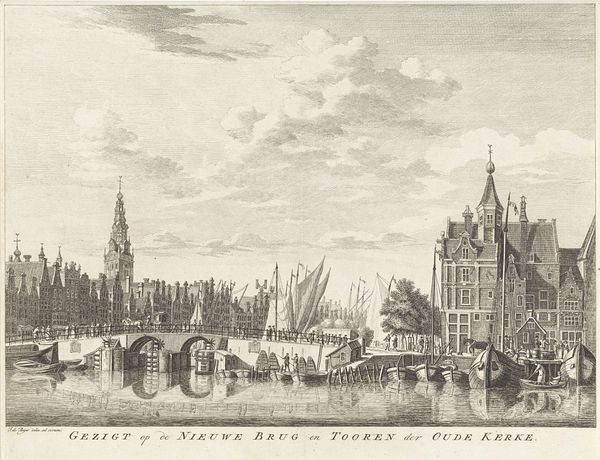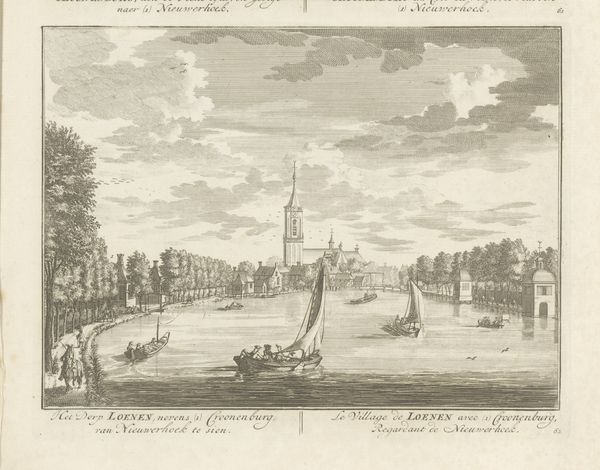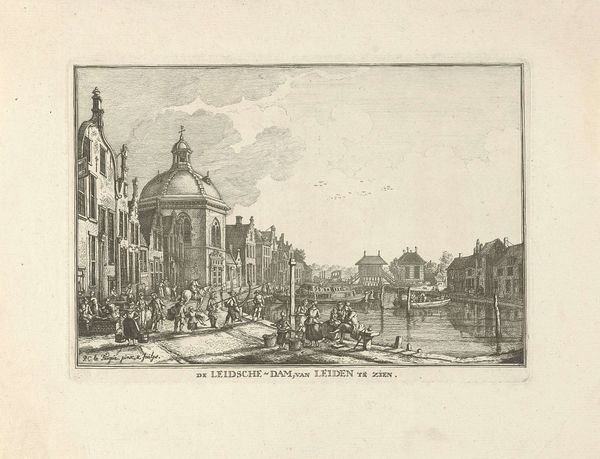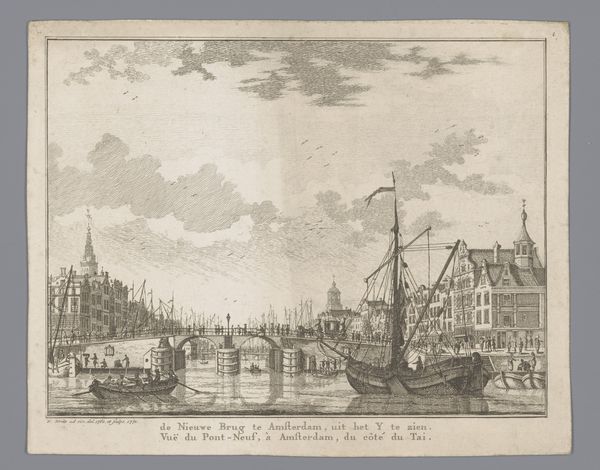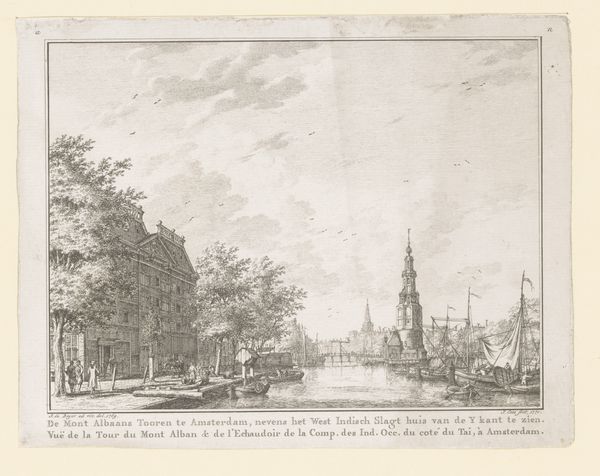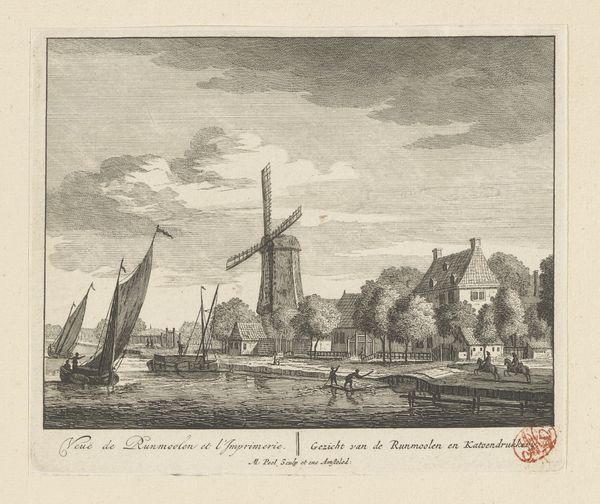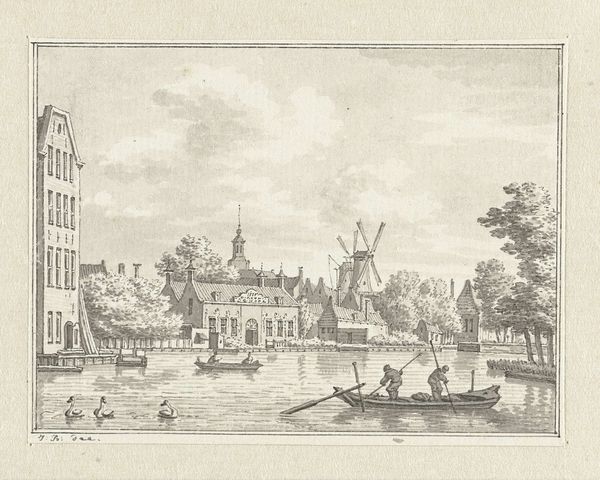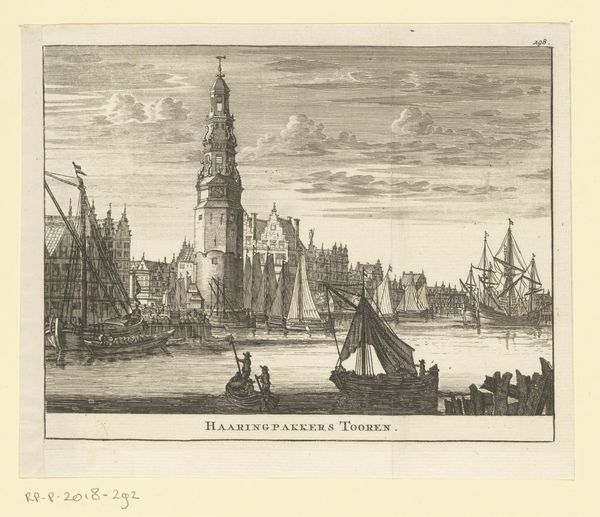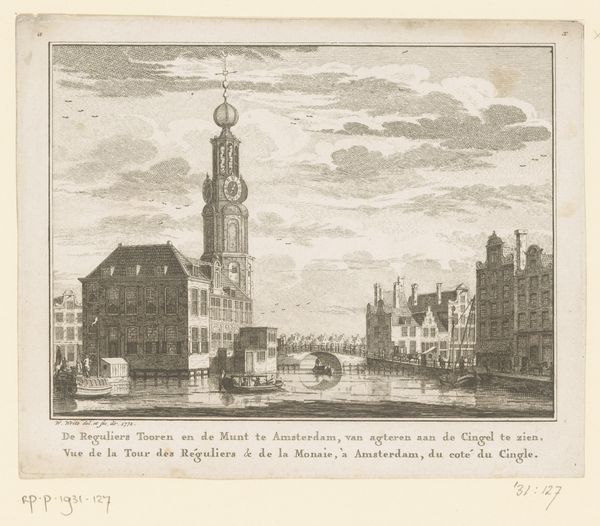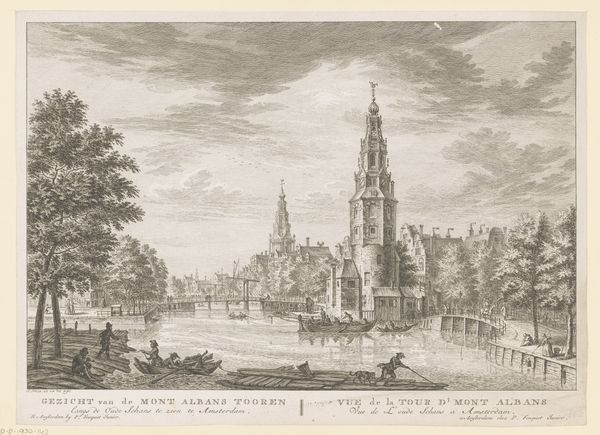
Gezicht op de Oude Schans en de Montelbaanstoren te Amsterdam 1760 - 1783
0:00
0:00
simonfokke
Rijksmuseum
Dimensions: height 286 mm, width 362 mm
Copyright: Rijks Museum: Open Domain
Curator: Here we have a cityscape titled "Gezicht op de Oude Schans en de Montelbaanstoren te Amsterdam," created between 1760 and 1783 by Simon Fokke. The artwork depicts a canal scene dominated by the Montelbaanstoren in Amsterdam. Editor: Immediately striking is the engraving's meticulous detail—the hatching and cross-hatching give it such remarkable tonal variation. The clouds feel quite baroque. What are your initial thoughts on the social context surrounding its creation? Curator: Well, it's significant that this print was produced during a period when Amsterdam was a major commercial hub. Prints like these circulated widely, bolstering the city's image as a place of trade and prosperity. Fokke, who repped himself on the piece as delineavit et sculpsit—meaning draughtsman and engraver—clearly understands his local context. Editor: Absolutely, and the architectural accuracy speaks to its function as more than mere decoration. Note the deliberate placement of the Montelbaanstoren, it creates verticality. How would you say it affects the overall composition and our perception? Curator: The Montelbaanstoren was built as part of the city's defenses in the 16th century. So it already has historic weight when Fokke depicted it, centuries later. It serves as a reminder of Amsterdam's resilience and power as a merchant city, even after the Dutch Golden Age was already coming to an end. Its dominance underscores Amsterdam’s mercantile prowess and position in an international arena. Editor: Good point! From a purely visual standpoint, that verticality really captures the eye. The boats and figures at the water level introduce horizontality. And how light and shadow plays off them generates such depth, and rhythm. The eye meanders and explores. Curator: These kinds of images became quite popular in the 18th century as emblems of civic pride, so it really represents the emergence of this strong, proud Dutch identity during a complex and changing period. Editor: And that combination of naturalism with careful stylistic choice makes it rather powerful to consider the relationship of what is present and what may have been manipulated—to generate new layers to the city itself!
Comments
No comments
Be the first to comment and join the conversation on the ultimate creative platform.
